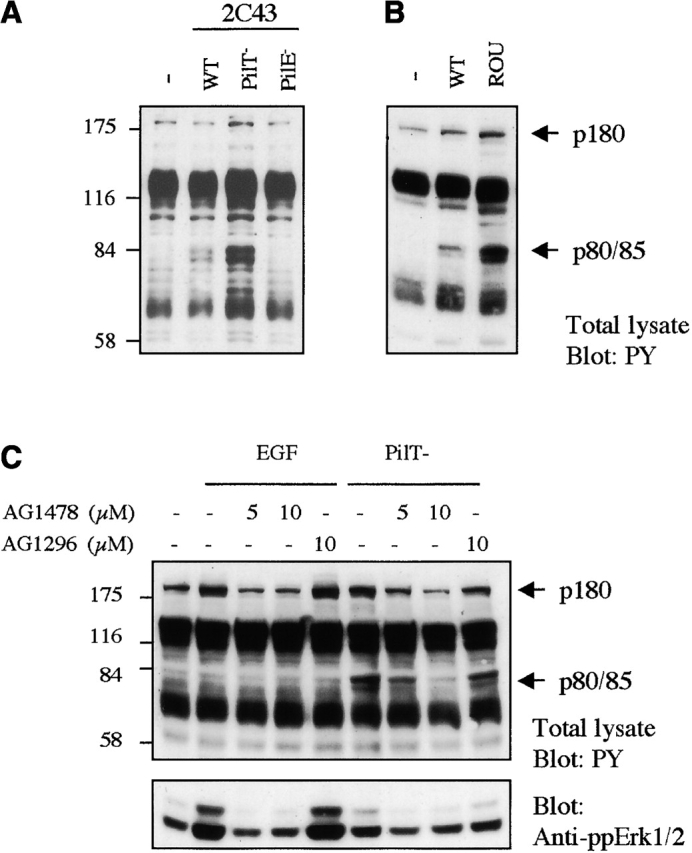Figure 1.

Localized adhesion of N. meningitidis induces tyrosine phosphorylation events that are prevented by AG1478 treatment. (A) HBMECs (starved for 18 h) were either uninfected (−) or infected with the wild-type strain (WT), the PilT-defective mutant (PilT−), or the PilE-defective mutant (PilE−) of the 2C43 strain of N. meningitidis for 4 h before lysis. (B) HBMECs starved for 18 h were either uninfected (−) or infected with the 2C43 wild-type strain (WT) or ROU strain (ROU). (C) HBMECs (starved for 18 h) were pretreated for 2 h with 5 or 10 μM AG1478, 10 μM AG1296, or left untreated (−). Cells were then infected for 4 h with the PilT-defective mutant strain in the presence of these inhibitors before lysis. As control, cells pretreated the same way were stimulated with 10 ng/ml EGF for 3 min before lysis. (A–C) Samples of whole cell extracts were analyzed by immunoblotting with an antiphosphotyrosine antibody (4G10). The electrophoretic mobilities of proteins of 80/85 and 180 kD (arrows) and of molecular weight standards (175, 116, 84, and 58 kD) are indicated. (C) Bottom, blot was reprobed with an antiphosphoErK1/2 antibody, which detects Erk1/2 when activated by phosphorylation.
